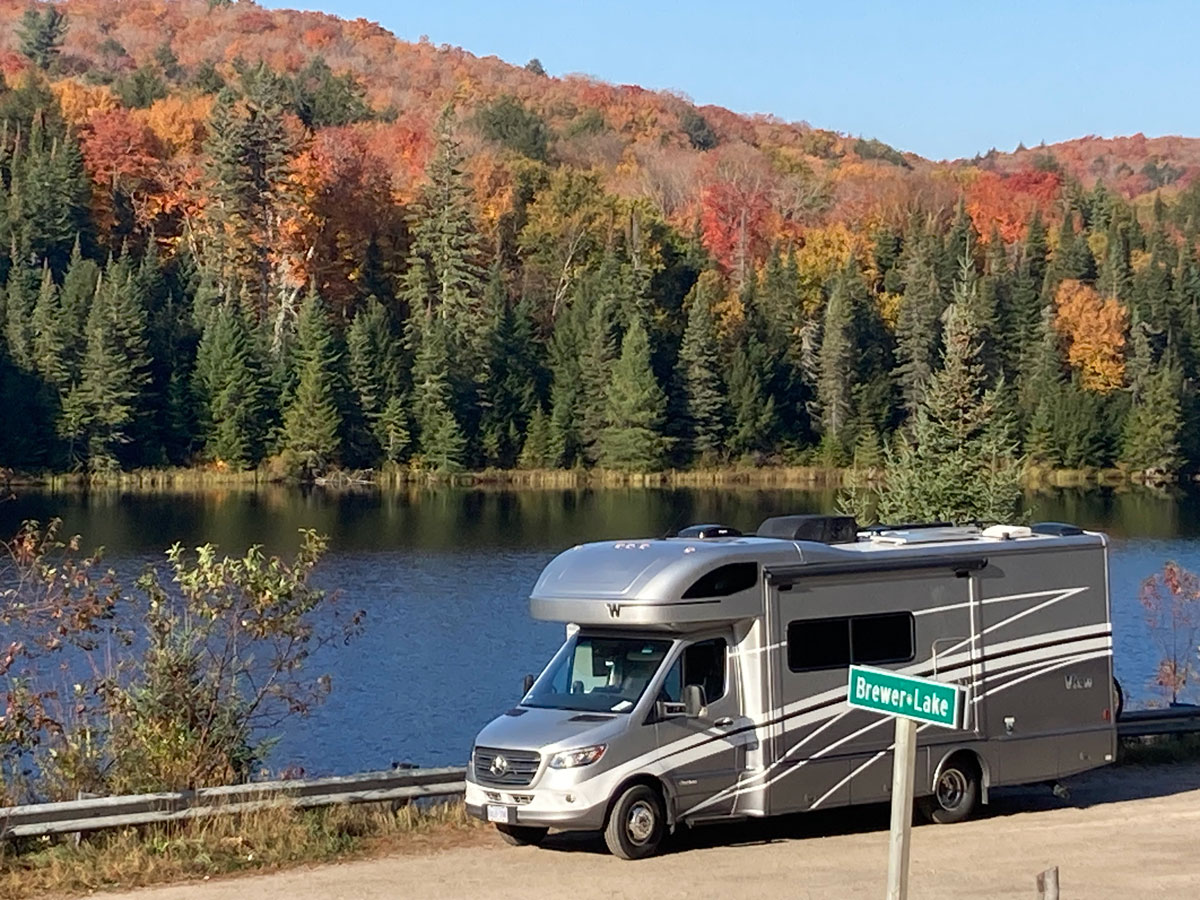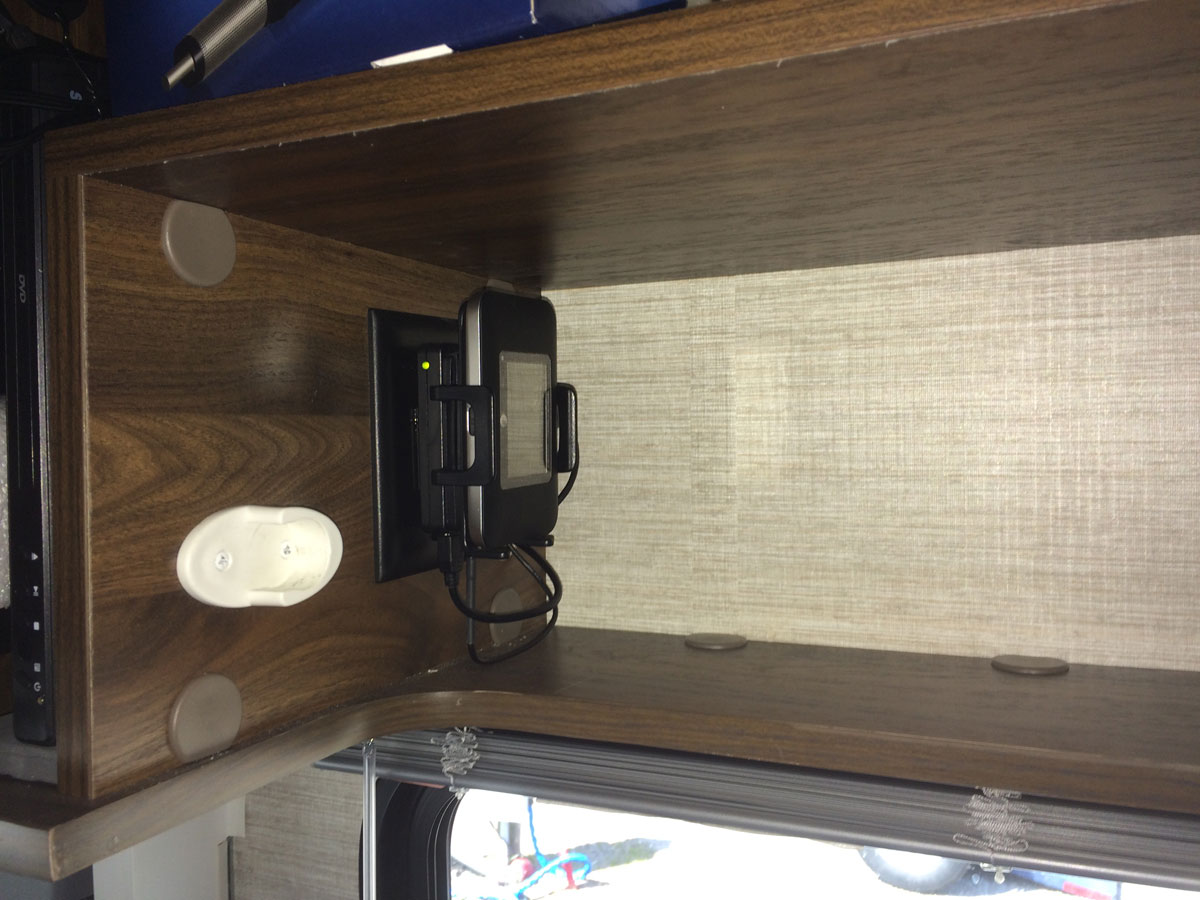RV Cellular Booster | RV Mods

Algonquin Provincial Park, Ontario
We use a cell booster to enhance the signal to our AT&T wireless hotspot, which relies on cell signals. Our setup is far from the sophistication of the booster systems out there today; we just use a cradle mount and small magnetic antenna on the roof. We had been using this setup in our last Sprinter based Class B, and for us, it worked just fine. With the limited space we had previously in our Class B, the dual antenna optimization of a more elaborate and expensive setup, combined with the clutter an interior antenna was going to create, was going to impact our living space negatively. For travelling around North America, we were very happy with the performance and the connectivity our old system gave us, and opted to just install it again in our new View. Could we use more performance? Well, maybe, but up to this point it has been hard to justify the purchase of a new system when the one we have works so well. Unlike some RVers who spend considerable time on BLM lands, or deep in National Forests, that practice has been the exception for us, instead of the rule.
Our setup consists of an old first generation Wilson Sleek 4G and the mini magnet antenna that came with it. The company has a newer version of this cradle mount system that appears to offer higher performance, but is much more expensive too. I did notice on Amazon.ca that someone is selling the identical version of the system we have now – it looks like Wilson sold the rights to the old design to someone else, and it is being marketed under a different name. I also notice that the cost now is less than one half of what we paid for our booster.
A thought on antennas – At the time of our original purchase, I picked up one of the 12-inch magnet mount whip type antennas. This worked great, except that it would keep getting knocked over by branches as we tucked into campsites here and there. After one such episode, and after dragging it down the road for a bit and damaging the base, I called up the company to get some replacement info. The company representative was very helpful, and honest. According to the company, there is no difference in performance between the 12-inch antennas and the small magnetic mini-mount antennas! I was quite surprised to hear that, but I came away believing that they market the 12-inch antennas because some folks want a bigger antenna… and the company is willing to sell them a bigger antenna. I have not been able to notice the difference in performance between the large whip type antenna and the mini antenna that came with the booster.
Brian from “RV with Tito” has a great YouTube channel, and has done a back to back test with the mini magnetic mount antenna and a large, high gain, Truck / RV antenna. He called the performance comparable, with only a 3 – 5 db difference between the two.
RV with Tito info on cell boosters
Also, this website is great for lots of info, and has data on antenna comparison:
Our modification in the View consists of installing a magnetic ground plane on the roof for the antenna, feeding the cable through the Winnebago roof access port, and then mounting the booster cradle in an optimum location. I had to modify the cradle mount, as the articulating arm wore out over time in our last setup. The cradle was installed on the inside of the media cupboard that houses our entertainment connections; this cupboard had both power and very easy access to the roof access port.
The requirement for a ground plane was new to us, as our old Class B had a metallic roof and acted as the default ground plane for the antenna. With our new fibreglass roof there is nothing for the magnetized antenna to hold on to, but more importantly, there is no metal surface to reflect the radio signals at the antenna. After doing some research, we discovered that it was not a big deal to rig something up.
This website has lots of good info:
The physics makes sense, and the wave length calculation checks with their recommendation. Don’t forget to use the speed of light in feet / second and the frequency in MHz, if you want to run the numbers.
For our ground plane we used a circular 9” lid from a cookie tin, painted it white, mounted it with some silicon caulking, and then finished up with some Dicor lap sealant to make it look like we knew what we were doing. (The jury is still out on that last part.)
With Winnebago’s addition of the roof top access port, this addition was very straightforward. James from the Fit RV has a good video of feeding a cable into the coach using this roof port, and can be found here:
Here is what our roof configuration looks like:

Not much else to say, other than we mounted the hotspot cradle in behind the TV with no noticeable degradation in performance. With the paper towels on the rod, the booster is a bit awkward to access. When we elected to use the rod as a towel rack it became much easier to get at it - during the unlikely event that I needed to check on what it is doing.
